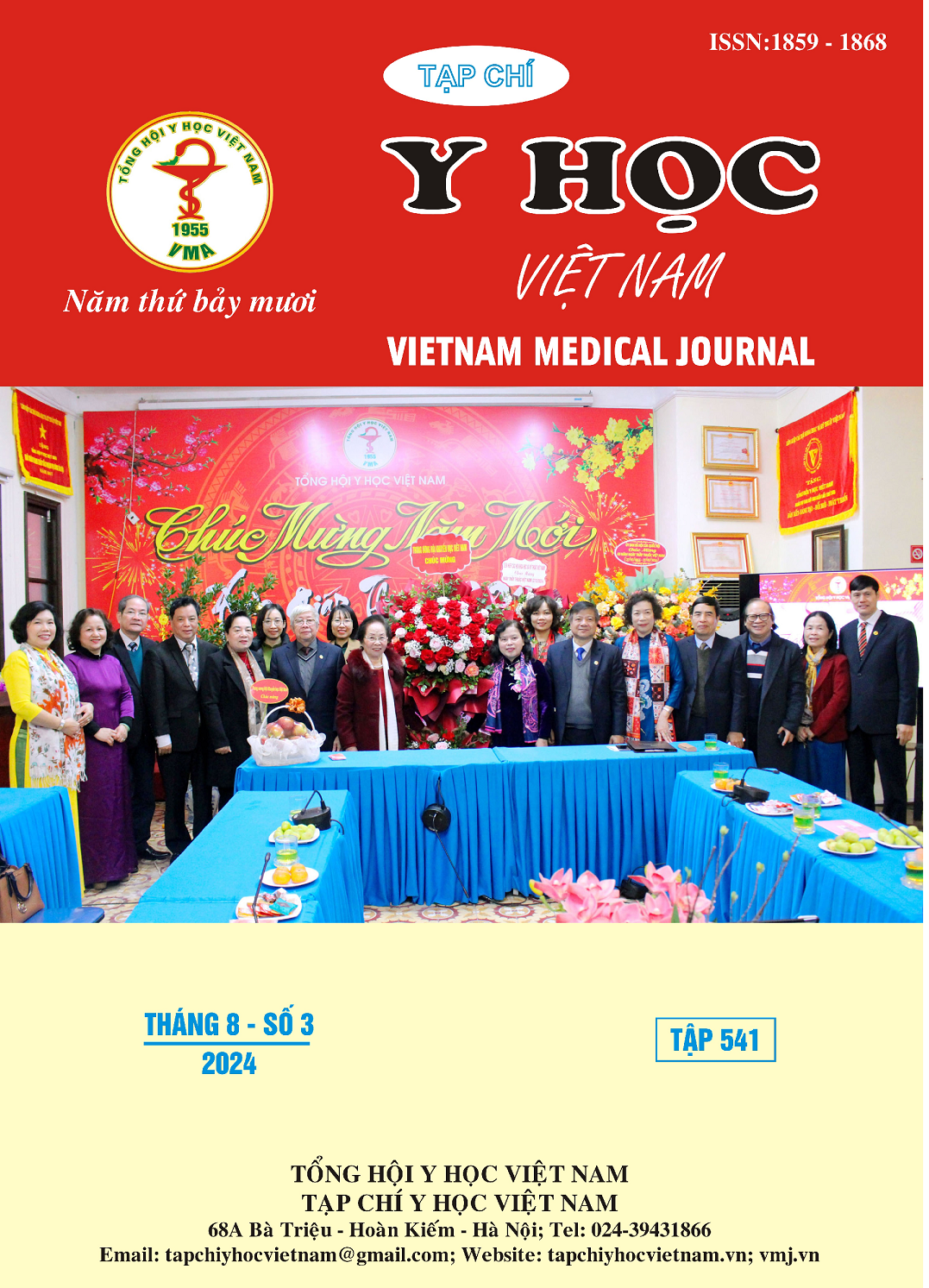SOME CHARACTERISTICS PHENOTYPES OF ASTHMA IN CHILDREN ASSOCIATED WITH PERIPHERAL BLOOD EOSINOPHILS
Main Article Content
Abstract
Background: Bronchial asthma is a heterogeneous disease, with clinical manifestations, disease progression and treatment response are different in each individual group. Since then, accurate classification of the clinical form of bronchial asthma has become increasingly important. Blood eosinophils are also one of the important factors involved in the pathogenesis of bronchial asthma and contribute to the classification of bronchial asthma phenotypes. Objectives: Describe some phenotypic characteristics of bronchial asthma in children >5 years old related to the number of eosinophils in peripheral blood. Materials and methods: A prospective cross-sectional study was conducted on 51 asthma patients. Materials and method: With convenience sampling method, 51 pediatric asthma patients >5 years old diagnosed and treated at Can Tho Children's Hospital were selected for a cross-sectional descriptive study. . In which, some phenotypic characteristics of bronchial asthma were investigated in 4 groups of pediatric patients with different numbers of blood eosinophils (<300 cells/μL, 300-500 cells/μL, 500-1000 cells/μL and >1000 cells/μL) are mean age, age of asthma onset, gender, BMI, personal history of atopy, family history of bronchial asthma/allergy and asthma severity management. Results: The average age in the study was 7.47 ± 2.61 years old (males accounted for 68.6%). The average number of eosinophils was 525.9 ± 508.7 cells/μL, of which 64.7% of pediatric patients with bronchial asthma had eosinophilia. Groups of pediatric asthma patients with different numbers of eosinophils all have some characteristic phenotypic features. In particular, with a threshold of 300 cells/μL, the number of eosinophils increases proportionally to the severity of bronchial asthma (p = 0.023). At the same time, increased eosinophil count was also associated with family history of bronchial asthma/allergies in pediatric patients (p=0.042). Conclusion: Children with bronchial asthma have a high rate of eosinophilia. Eosinophilia can be a marker to help classify bronchial asthma phenotypes and predict the severity of bronchial asthma attacks.
Article Details
Keywords
Bronchial asthma, eosinophils, bronchial asthma phenotype.
References
2. Bộ Y tế. Quyết định 4888/ QĐ-BYT Về việc ban hành tài liệu chuyên môn “Hướng dẫn chẩn đoán và điều trị hen trẻ em dưới 5 tuổi”. (2016). https://www.vnras.vn/2016/09/quyet-dinh-4888-qd-byt.html.
3. Đỗ Thị Hạnh, Nguyễn Thị Diệu Thúy, Bùi Công Thắng, Phạm Quốc Khương. Kiểu Hình hen phế quản của trẻ em trên 5 tuổi tại Bệnh viện Nhi Trung ương. 2019. https://tailieuchung.com/ vn/tlID1260968_kieu-hinh-hen-phe-quan-o-tre-tren-5-tuoi-tai-benh-vien-nhi-trung-uong.html.
4. Nguyễn Thị Diệu Thúy. Nghiên cứu hiệu quả kiểm soát hen bằng Nitric oxid khí thở ra ở trẻ em trên 5 tuổi tại Bệnh viện Nhi Trung Ương. Luận văn Tiến sĩ y học. Trường Đại học Y Hà Nội. 2019. 118.
5. Lê Thị Thu Hương. Nghiên cứu biến đổi một số tế bào viêm và cytokine trong máu ngoại vi ở trẻ hen phế quản. Luận án tiến sĩ nhi khoa. Trường Đại học Y Hà Nội. 2017. 107.
6. Katz L.E., Gleich G.J., Hartley B.F., et al. Blood eosinophil count is a useful biomarker to identify patients with severe eosinophilic asthma. Ann Am Thorac Soc. 2014. 11(4), 531-6, doi: 10.1513/AnnalsATS.201310-354OC.


